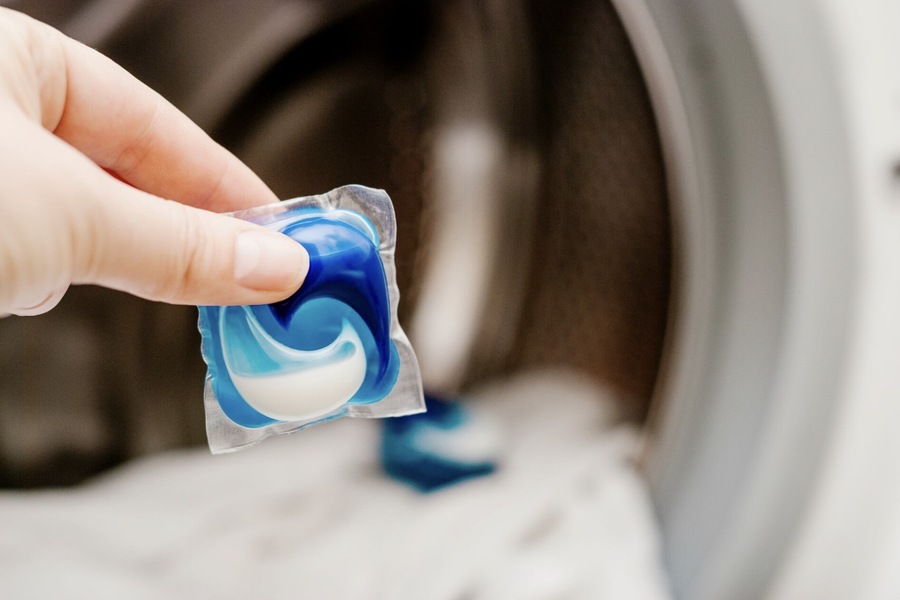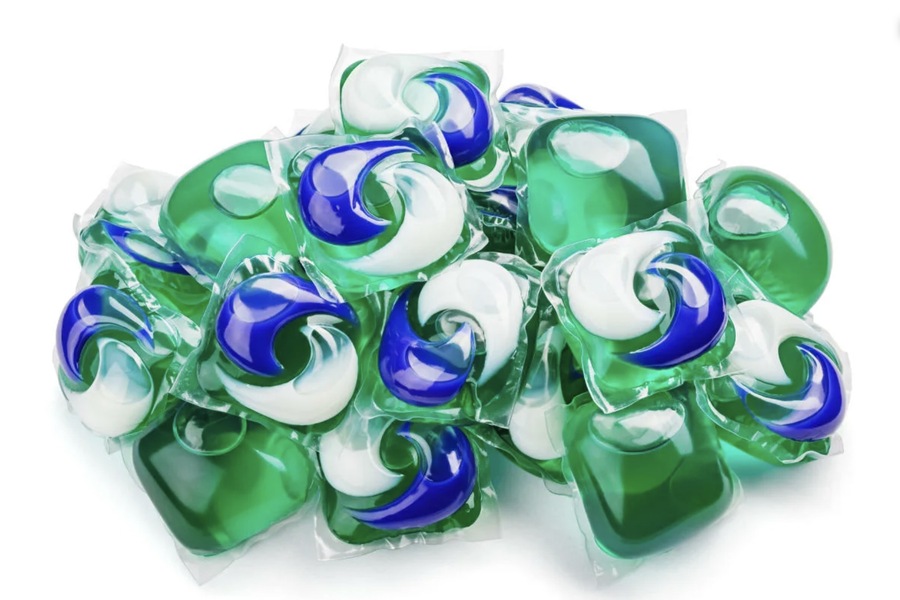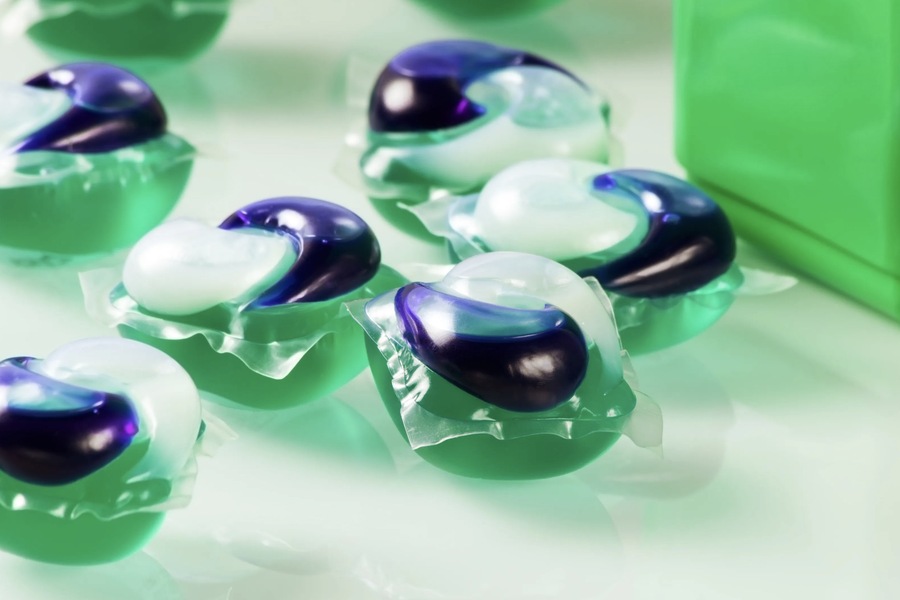Laundry may not be the most strenuous household task, but achieving fresh, clean, and well-preserved clothing still requires the right choice of detergent. With today’s vast array of options from suppliers worldwide—including prominent cleaning product suppliers in the UAE—understanding the historical journey and formulation of detergents can help consumers make informed choices.
Early Beginnings: The Primitive Washing Process
As humans evolved from wearing animal skins to woven fabrics made from cotton, flax, and wool, the need for effective washing methods emerged. Early washing techniques relied on the resources available in different civilizations, but all shared a labor-intensive nature.
Ancient Egypt: Egyptians turned to the natural resources around them, like charcoal, ash, and salt, mixed with plant juices to break down dirt. Clothes were rinsed in the Nile, making the river both a water source and a washing tool.
Ancient Greece and Rome: Greeks and Romans utilized holes made from clay as primitive washing basins. Clothes were submerged and then trampled on to remove dirt. Urine was also sometimes used as a source of ammonia, which breaks down grease.
India: River washing techniques included soaking and beating garments on flat stones, a method still found in some rural parts of the world today.
Slavic Regions: In Russia and Eastern Europe, people boiled their linen in large vats or troughs. Lye, derived from ash, was added as a powerful cleaning agent. This boiling method was particularly effective for disinfecting clothes.
In these societies, laundry was backbreaking work, largely carried out by women. Recognizing this burden, early inventors began to devise machines to make the task easier.

The Invention of the Washing Machine: A Game Changer
Washing machines marked a turning point in laundry’s evolution, reducing the physical toll on people and enabling more effective cleaning. The machine’s journey can be broken down into several significant milestones.
18th Century: The washboard emerged as a simple, but effective tool, featuring ribbed surfaces that allowed users to scrub dirt out of clothes by hand.
19th Century: The hand-cranked washing machine entered the market, typically designed as a barrel with an internal drum. Clothes were loaded, and users manually turned the drum to agitate the garments.
Early 20th Century: Washing machines evolved further with the addition of electric motors, enabling the mass production of early motor-powered models.
1978: The invention of the fully automatic washing machine changed laundry forever. This machine could handle the entire wash cycle, including spinning and rinsing, with little human intervention.
This automation spurred innovation in detergent design, as washing methods now allowed for a wider range of cleaning products to be effective.
The Rise of Detergent Powders
The shift to automated washing coincided with an increased awareness of cleanliness. As the germ theory of disease became established, the link between hygiene and health was clear. This awareness drove chemists to develop new cleaning products.
In 1876, Fritz Henkel, a German chemist, developed and marketed the first commercial washing powder, based on sodium silicate, marking a new era of convenience in laundry. Hand-washing powders allowed for cleaner clothes without needing the caustic agents previously used, like lye and ash. Soon after, Henkel’s company introduced Persil, a powder specifically designed for machine washing.
Through the 20th century, companies in Germany, the UK, and the US improved detergent formulations, creating different types of detergents with specific purposes: bleaching, softening, stain removal, and more.
The Composition of Washing Powders
Washing powders contain a mix of chemical components, each chosen for its effect on cleaning, stain removal, and fabric preservation. Here’s a breakdown of key ingredients found in powdered detergents:
Surfactants: These are the backbone of any detergent, breaking down grease and dirt and suspending it in water for easy rinsing.
Builders: Typically phosphates or zeolites, builders soften the water, which allows the surfactants to work more effectively. Some are environmentally problematic, leading to phosphates being phased out in many regions.
Enzymes: Protease, amylase, and lipase enzymes target specific types of stains, like proteins, starches, and fats, breaking them down at a molecular level.
Bleaching Agents: Often percarbonate-based, bleaching agents help to brighten whites and remove stains that surfactants alone cannot lift.
Optical Brighteners: These chemicals absorb UV light and re-emit it as visible blue light, giving fabrics a “whiter-than-white” appearance.
Today, detergents are formulated to meet a variety of specific laundry needs, from heavy-duty stain removal to gentle, hypoallergenic options for sensitive skin.
Liquid Detergents: An Evolution in Fabric Care
The emergence of liquid detergents was a significant advancement, offering a more versatile alternative to powders. While the composition of liquid detergents is similar to that of powders, they contain fewer anionic surfactants, making them less aggressive and ideal for delicate and lightly soiled clothing.
Advantages of Liquid Detergents
Gentler on Fabrics: Liquids dissolve quickly and rinse away easily, making them suitable for delicate materials.
Reduced Residue: Unlike powders, which can leave white residues on fabrics, liquids are less likely to cause buildup.
Low Temperature Efficiency: Many liquid detergents work well at lower temperatures, often in the range of 30–40°C.
Precision in Dosing: Liquid detergents allow for more precise measurement, reducing waste.
Drawbacks of Liquid Detergents
Less Effective on Grease: Liquid detergents may not perform as well as powders on oily stains.
Shorter Shelf Life: Due to their water content, liquid detergents have a more limited shelf life than powders.
Higher Cost: Liquids often come at a premium price due to the convenience and formulation.
The Latest Innovation: Gel Detergents and Capsules
In recent years, gel detergents and pre-measured capsules (also known as pods) have surged in popularity due to their convenience, precision, and efficiency.
Gel Capsules
These small, single-use pods contain a concentrated detergent in gel form. They are especially popular among users who prioritize ease and effectiveness, as each pod contains a pre-measured amount of detergent.
Advantages of Gel Capsules
Ease of Use: Capsules are simple to store and eliminate the need for measuring.
Efficiency at Low Temperatures: Gel formulations are designed to work even in cold water, which saves energy and helps preserve fabric quality.
Waste Reduction: Capsules offer a more sustainable option since they contain just the right amount for each wash, minimizing overuse.
Disadvantages of Gel Capsules
Higher Cost per Use: Gel capsules tend to be more expensive on a per-load basis than powders or liquids.
Safety Concerns: Capsules pose a risk to children if ingested, so they must be stored out of reach.

Detergents for Specific Purposes
Today, specialized detergents cater to different washing requirements:
Detergents for Baby Clothes: These are formulated to be hypoallergenic and free from harsh chemicals, protecting infants’ sensitive skin.
Eco-Friendly Detergents: These products avoid phosphates, synthetic fragrances, and dyes. They often contain biodegradable ingredients and are packaged in recyclable materials.
Detergents for Different Fabrics: Specialized detergents for wool, silk, and other delicate fabrics contain mild surfactants that clean without damaging fibers.
High-Efficiency Detergents (HE): For use in high-efficiency washing machines, these detergents are low-sudsing, helping HE machines perform effectively and use less water.
Choosing the Right Detergent
Selecting the ideal detergent depends on several factors, including fabric type, water hardness, washing machine type, and personal preferences. It can be beneficial to keep a few detergent varieties at home to meet different needs, such as:
Powders for heavy stains and whites
Liquids for frequent, gentle washing of lightly soiled garments
Gel capsules for convenience and precision, especially for busy households
It’s essential to opt for products from reputable manufacturers and avoid cutting corners on quality, as low-grade detergents can harm fabrics and reduce a garment’s lifespan. Suppliers around the world, such as those in the UAE, offer a broad selection of detergents to cater to specific cleaning needs, meeting high standards of effectiveness and safety.
Conclusion
The evolution of detergents reflects a fascinating journey from rudimentary washing aids like lye and ash to the sophisticated, eco-friendly options available today. The progress from powders and liquids to the latest gel capsules highlights ongoing innovations designed to simplify laundry while protecting fabric quality and the environment. In an era where effective cleaning solutions are both readily accessible and varied, consumers can now achieve optimal cleanliness with far less effort—an outcome that people centuries ago could hardly have imagined.

I graduated from the California Institute of Technology in 2016 with a bachelor’s degree in software development. While in school, I earned the 2015 Edmund Gains Award for my exemplary academic performance



